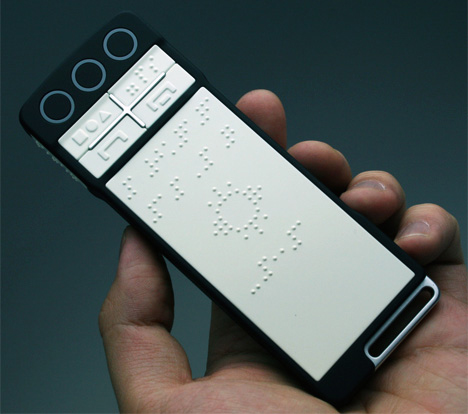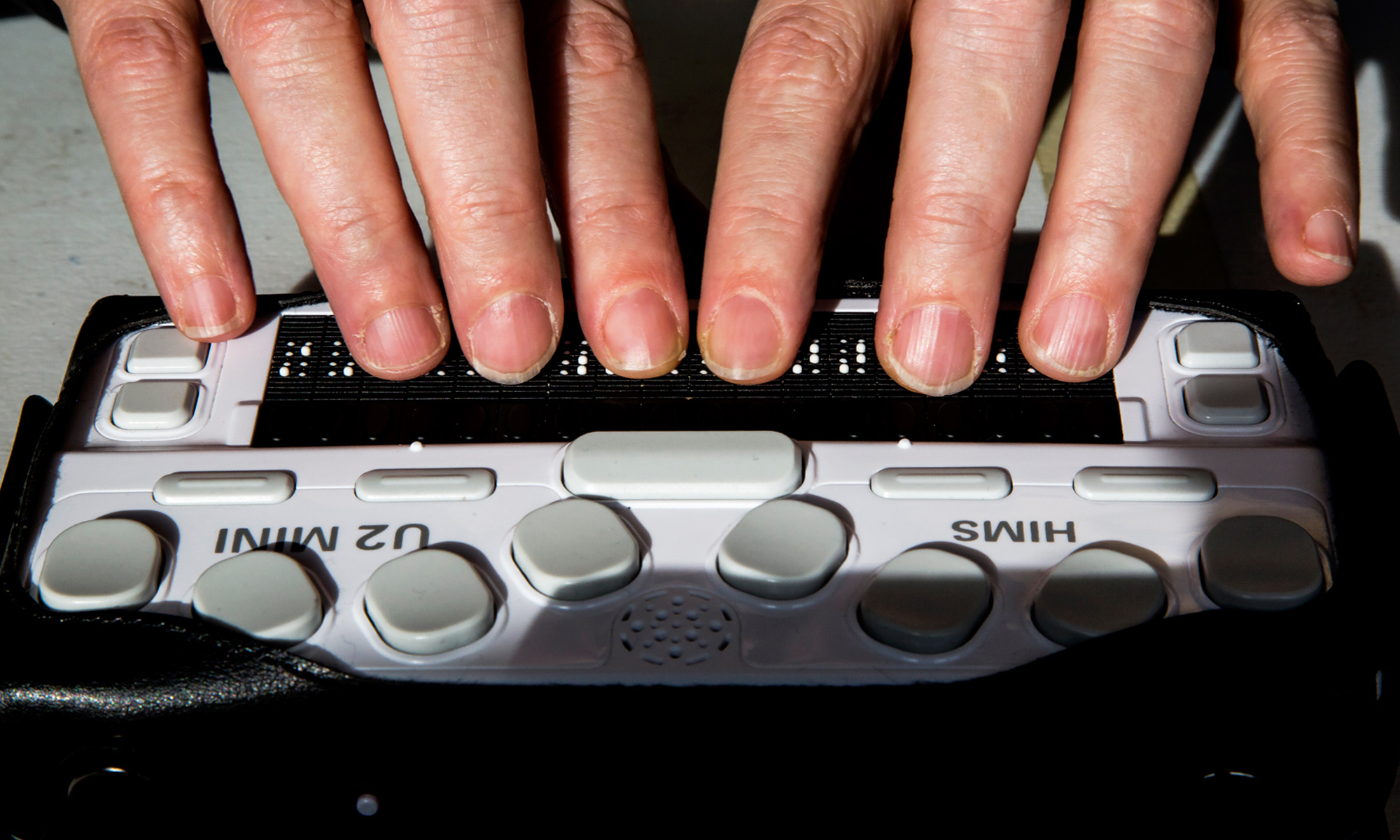Enhance Accessibility with Braille Devices and Notetakers
Enhance Accessibility with Braille Devices and Notetakers
Blog Article
Discover Cutting-edge Tools Developed for the Visually Impaired
The growth of ingenious tools for the aesthetically impaired represents a considerable development in ease of access and self-reliance. Technologies such as smart glasses with AI abilities and mobile applications made to supply acoustic summaries are improving day-to-day experiences for individuals. In addition, wearable tools that use haptic comments enhance environmental recognition, while modern Braille technologies offer brand-new means to engage with message. As these tools remain to develop, their impact on the lives of those with aesthetic impairments raises important questions about the future of inclusivity and freedom in numerous facets of life. What exists ahead in this technical landscape?
Smart Glasses for Navigation

Smart glasses made for navigating are transforming the way visually impaired people communicate with their environment. These innovative gadgets use a mix of electronic camera innovation, expert system, and auditory comments to provide real-time information regarding surroundings. By using barrier discovery systems, clever glasses can notify users to prospective risks, making it possible for more secure movement in both unfamiliar and acquainted setups.
The combination of GPS modern technology additionally boosts navigating capabilities, allowing customers to receive auditory directions as they relocate. This hands-free method not only cultivates independence yet also equips visually damaged individuals to navigate metropolitan landscapes with raised confidence. In addition, lots of clever glasses are geared up with attributes that identify spots and road indications, offering contextual info that improves the user experience.
Additionally, the development of these gadgets is constantly advancing, with business working to improve the accuracy of item recognition and expand the variety of navigational features. As smart glasses end up being extra budget-friendly and available, they hold the potential to significantly transform daily life for aesthetically damaged users. Ultimately, these ingenious tools represent a critical action towards inclusivity, offering enhanced wheelchair and a better feeling of freedom for people browsing the world around them.

Mobile Application for Daily Living
Exactly how can mobile applications improve the daily lives of aesthetically damaged people? Mobile applications are changing the means aesthetically damaged users browse their atmospheres, manage everyday tasks, and access info. These applications provide necessary support with numerous functionalities, cultivating self-reliance and improving lifestyle.
Several innovative mobile applications are developed especially for day-to-day living. For circumstances, apps like Be My Eyes connect aesthetically impaired users with sighted volunteers by means of video clip calls, allowing them to get real-time help with tasks such as reviewing labels or navigating unknown spaces. Seeing AI, created by Microsoft, makes use of synthetic knowledge to explain environments, checked out message, and identify things, properly transforming a smart device into a powerful device for day-to-day support.
In addition, navigating apps tailored for the aesthetically impaired, such as Aira and BlindSquare, offer audio-based instructions and ecological details, making it possible for customers to traverse their surroundings securely and with confidence. Past navigation and instant assistance, mobile applications likewise sustain company and task management, with features that aid users establish reminders, develop order of business, and track consultations. In summary, mobile applications function as indispensable sources, equipping aesthetically impaired people to lead even more independent and satisfying lives.
Wearable Technologies for Support
Empowerment via technology is increasingly apparent in the realm of wearable gadgets made to aid visually damaged individuals. These cutting-edge tools incorporate flawlessly into every day life, enhancing navigation and supplying necessary feedback to individuals. Clever glasses equipped with cameras can acknowledge faces and read message aloud, permitting individuals to communicate more confidently in social check that and professional settings.
Another significant advancement is using haptic responses systems in wearable gadgets. These systems use vibrations or other responsive signals to share information regarding the individual's atmosphere, such as obstacles or adjustments in terrain, boosting flexibility and security. Wearable innovations likewise include wristbands that attach to smartphones, notifying customers to notifications via subtle resonances, therefore improving connection without dependence on visual cues.
As these technologies remain to evolve, they are not just boosting freedom for aesthetically impaired people yet likewise fostering a better sense of addition in society. By connecting the gap in between challenges faced in day-to-day living and the potential for autonomy, wearable technologies function as pivotal tools in the quest for equality and empowerment for those with visual problems.
Sound Summary Tools
Sound summary devices play a crucial duty in improving accessibility for visually impaired individuals, supplying them with the capacity to engage with visual media. Screen readers for the blind. These devices offer narrated summaries of essential visual elements in movies, television programs, and live efficiencies, ensuring that users can completely understand the context and feelings conveyed with visuals
Audio summary can be integrated into different systems, including streaming services, cinema testings, and live movie theater. Several preferred streaming services now consist of audio description as an access attribute, permitting audiences to select it conveniently. Along with mainstream media, specialized apps also exist, providing audio summaries for art exhibits, galleries, and various other cultural occasions.
The performance of audio summary rests on the skill of the storytellers, that have to convey aesthetic information succinctly without detracting from the initial computer glasses blue light audio. Innovations in this area are likewise leading the way for even more individualized experiences, where users can readjust the degree of information and pacing according to their choices.
Braille Innovations and Gadgets
Braille technologies and gadgets have actually considerably changed the method aesthetically impaired people engage with text and details. Modern improvements have actually led to the growth of versatile devices that improve proficiency and freedom among individuals.
Furthermore, mobile Braille notetakers incorporate traditional Braille input with modern capabilities, facilitating note-taking, organizing, and file editing and enhancing on the go. Voice-activated assistive devices. These portable gadgets typically include text-to-speech capabilities, connecting the void between Braille and auditory info
On top of that, ingenious Braille printers have actually emerged, allowing individuals to produce Braille tags, papers, and academic products efficiently. This ease of access promotes higher engagement in professional and instructional environments, eventually promoting inclusivity.
Moreover, research into clever Braille technologies remains to expand. Instruments that include expert system are being checked out to supply real-time navigation support and contextual details, boosting the customer experience in varied setups. On the whole, these technologies mirror a dedication to link equipping visually damaged people with technology, ensuring they can quickly accessibility and engage with the world around them.

Verdict
The improvement of cutting-edge devices for the aesthetically impaired significantly enhances independence and high quality of life. These modern technologies not only foster better addition yet also advertise freedom in day-to-day tasks, eventually contributing to a more obtainable and equitable culture for visually impaired people.
As smart glasses come to be extra accessible and budget-friendly, they hold the possible to dramatically change daily life for aesthetically damaged customers. Mobile apps are changing the way visually damaged users browse their environments, manage daily tasks, and accessibility info. Applications like Be My Eyes connect visually impaired individuals with sighted volunteers through video clip calls, allowing them to receive real-time aid with tasks such as reviewing labels or navigating strange areas.Furthermore, navigation applications tailored for the visually damaged, such as Aira and BlindSquare, provide audio-based directions and ecological details, enabling individuals to traverse their environments securely and with confidence.The improvement of innovative tools for the aesthetically damaged dramatically enhances self-reliance and high quality of life.
Report this page